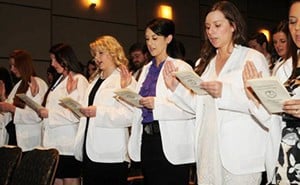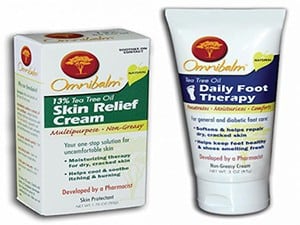UAMS Takes Action in 2013
Dec. 27, 2013 | New degree programs and innovations in patient care marked 2013 as a year of dynamic action for UAMS. UAMS in January opened its Oral Health Clinic with 18 treatment rooms and with plans eventually to open the only dental residency program in the state. Delta Dental of Arkansas Foundation contributed $2 million to the university toward the opening of the Oral Health Clinic on the Little Rock campus. “The strong support by the Delta Dental of Arkansas Foundation has been critical to our ability to open this clinic and plan for the kind of facility we need to provide comprehensive care for our patients and host the dental residency program, which will have a wide-reaching effect on improving dental care in Arkansas,” said UAMS Chancellor Dan Rahn, M.D. “The clinic and residency program will improve access to dental health in our state.” In March, the university received approval to begin offering the state’s first bachelor’s degree in emergency medical services through the Department of Emergency Medical Sciences in the UAMS College of Health Professions. At its northwest Arkansas campus, UAMS will start educating physical therapy students with the goal of creating a doctoral program in the college by 2015. The College of Health Professions’ new physician assistant program in April won accreditation from the Accreditation Review Commission of Education for the Physician Assistant. The first group of 26 physician assistant students began classes in May. The UAMS Psychiatric Research Institute started two new initiatives for patient care: a new treatment program to reduce the mental and physical symptoms related to post-traumatic stress disorder and a 10-bed inpatient unit devoted solely to women with serious mental health needs such as trauma, depression and anxiety. To lead the university’s effort to develop and strengthen patient- and family-centered care, UAMS hired national expert as associate vice chancellor for patient- and family-centered care. “I have never met anyone more passionate about patient- and family-centered care than Julie,” Rahn said in March. “Her real-life experience gives her a unique and powerful perspective on this issue. We are honored to have her take the lead in this crucial endeavor at UAMS. Our goal is nothing short of transforming the way we include patients and families as full partners in their care.” Other accomplishments in 2013 include: Patient Care · The UAMS Palliative Care Program received national certification, becoming the first in Arkansas and only one of 36 nationally to be accredited under a new evaluation process. · To promote the best patient care closest to home, UAMS established a center that will look for partnerships and collaborations in underserved areas to assist with routine care and provide access to specialty care. The Center for Healthcare Enhancement and Development will explore ways for the university to support and work with hospitals and clinics throughout the state to provide better care for Arkansans. · The Fort Smith Family Medical Center at UAMS West earned national recognition as a Level III patient-centered medical home while the UAMS Family Medical Center on the Little Rock campus earned renewal of its Level III status. · In the operating room, UAMS neurosurgeon John D. Day, M.D., became the first neurosurgeon in Arkansas to use a new and minimally invasive, breakthrough brain tumor removal procedure using a tube-like tool and sophisticated three-dimensional imagery in two successful surgeries. · UAMS in the fall opened an allergy and immunology clinic specializing in treating adults with asthma, seasonal allergies, food allergies, chronic hives, drug allergies, stinging insect allergies and immune system deficiencies. Matthew Bell, M.D., and Joshua Kennedy, M.D., assistant professors in the Division of Allergy and Immunology in the College of Medicine, are leading the clinic. Academic · The Donald W. Reynolds Institute on Aging opened the Schmieding Home Caregiver Training Program in El Dorado, providing new opportunities for the elderly to stay in their homes as they age. The program offers four levels of certification for paid caregivers and two workshops for those who provide care for family members. In 2013, the program also opened in Fort Smith, Little Rock and Hot Springs, which brings the number of training sites to nine across the state. Each UAMS Center on Aging where a program is based contains a classroom and learning laboratory that simulates a home environment. A $3.02 million grant from the Donald W. Reynolds Foundation funded the 2013 expansion. · G. Richard Smith, M.D., on May 1 became dean of the UAMS College of Medicine and vice chancellor. A professor and holder of the Marie Wilson Howells Chair, Smith most recently served as director of the Psychiatric Research Institute and chair of the UAMS Department of Psychiatry in the College of Medicine. He succeeded Debra Fiser, M.D. · The UAMS College of Medicine’s Continuing Medical Education Office, received a six-year Accreditation with Commendation, the highest level awarded by the Accreditation Council for Continuing Education. The CME Office coordinates state-of-the-art, evidence-based continuing medical education for faculty physicians at UAMS and physicians practicing throughout the state. · In October, the College of Medicine was recognized in a nationwide study as being among the top five medical schools in meeting national clinical conflict-of-interest standards. The Institute on Medicine as a Profession surveyed policies at 127 medical schools and published the results in the October issue of Academic Medicine. Research · The Biomedical Advanced Research and Development Authority (BARDA) awarded UAMS two contracts worth about $8.7 million to proceed with advanced development of a promising treatment for use in radiological or nuclear emergency situations. Including the base BARDA contract for $4.5 million entered into in 2011, the total value awarded is more than $13 million. · Omnibalm Daily Foot Therapy, a cream for general and diabetic foot care developed by Bill Gurley, Ph.D., a College of Pharmacy pharmaceutical sciences professor at UAMS, became available in late 2013 in 121 Walmart stores across seven states. The cream is a non-greasy formula that softens and helps repair dry, cracked skin and keeps feet healthy and shoes smelling fresh. It is marketed by Balm Innovations LLC, a UAMS BioVentures startup company licensed to take UAMS inventions from laboratories to the marketplace. · Two UAMS neurologists — Sami Harik, M.D., and Vasuki Dandu, M.D., — were part of a multi-institutional team that identified a new neurodegenerative disease that is associated with increased deposits of iron in the brain. The newly discovered disease is called BPAN (beta-propeller protein associated neurodegeneration) and was discovered in 20 patients whose symptoms included early-onset developmental delay and other neurological deterioration. · Valchlor, a breakthrough gel for treating lymphoma developed with the help of UAMS College of Pharmacy Professor Peter Crooks, Ph.D., won marketing approval from the U.S. Food and Drug Administration. Valchlor is for the topical treatment of stage 1A and 1B mycosis fungoides-type cutaneous T-cell lymphoma, a rare form of non-Hodgkins lymphoma. · Living human lungs donated to UAMS are helping a multi-center team of researchers begin testing potential breakthrough asthma treatments as part of a five-year, $11.9 million study funded by the National Institutes of Health. The large study was made possible in part due to innovations in the processing and preservation of the lungs by UAMS cell biologist Richard Kurten, Ph.D. Kurten has helped open the door to exciting new research opportunities by extending the lifespan of donated lungs. · A multi-year study led by Appathurai Balamurugan, M.D., M.P.H., of UAMS and the Arkansas Department of Health, found the neighborhood where you live is a risk factor for stroke. The study was the first of its kind to estimate the risk of dying from stroke at the block group level. The study analyzed 8,930 stroke deaths in Arkansas during 2005-2009 at the block group level and found there is a wide variation in risk of death due to stroke, sometimes even a four-fold difference between adjacent neighborhoods. The study showed that neighborhood poverty and low educational attainment play a bigger role than race and ethnicity. |


